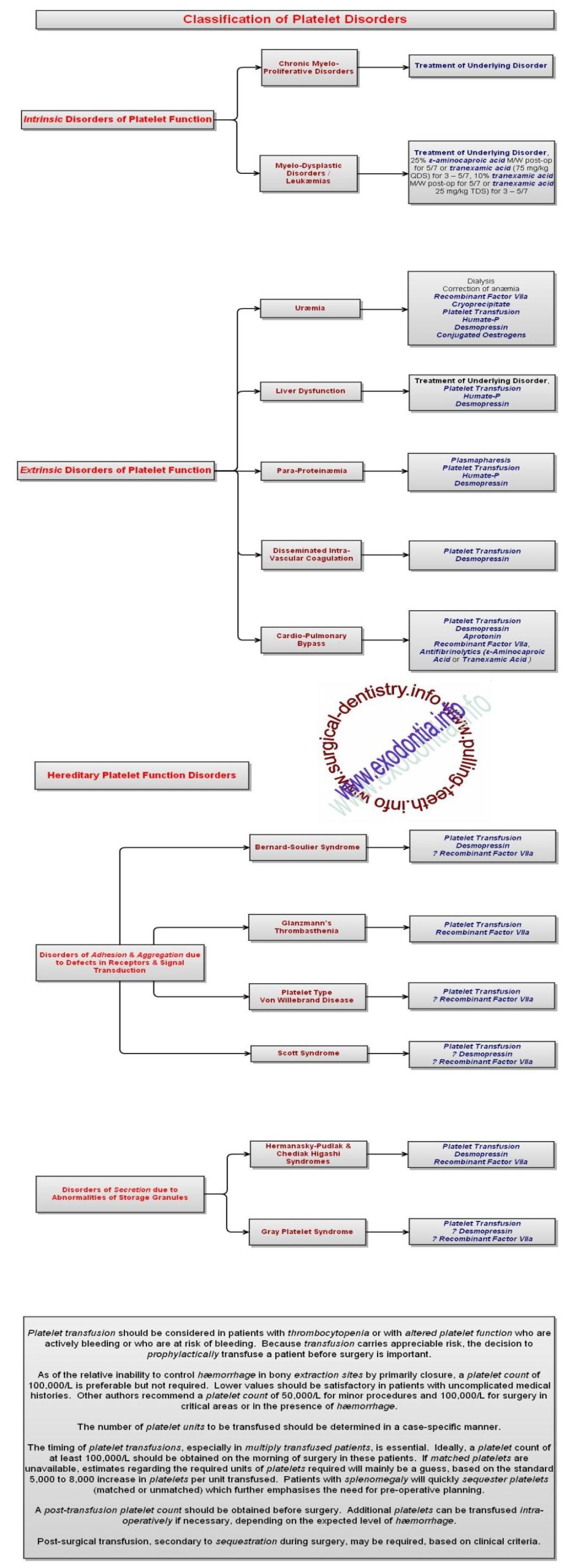Platelet Disorders & Deficiencies & Oral Surgery
Patients with Platelet Disorders & Deficiencies
Platelets are cell fragments that function in the clotting / coagulation system.
Platelets circulate for 7 – 10 days. About one third are always transiently sequestered in the spleen.
The platelet count is normally 140,000 – 440,000/μL. However, the count can vary slightly according to menstrual cycle phase, decrease during near-term pregnancy (gestational thrombocytopænia) & increase in response to inflammatory cytokines (secondary or reactive thrombocytosis).
Platelets are eventually destroyed, primarily by the spleen.
Platelet disorders include:
Abnormal increase in platelets (thrombocythæmia) Decrease in platelets (thrombocytopænia) Platelet dysfunction
Any of these conditions, even those in which platelets are increased, may cause defective formation of hæmostatic plugs & bleeding.
The risk of bleeding is inversely proportional to the platelet count.
When the platelet count is < 50,000/μL, minor bleeding occurs easily & the risk of major bleeding increases.
Counts between 20,000 – 50,000/μL predispose to bleeding with trauma, even minor trauma.
With counts < 20,000/μL, spontaneous bleeding may occur.
With counts < 5000/μL, severe spontaneous bleeding is more likely.
However, patients with counts < 10,000/μL may be asymptomatic for years.

